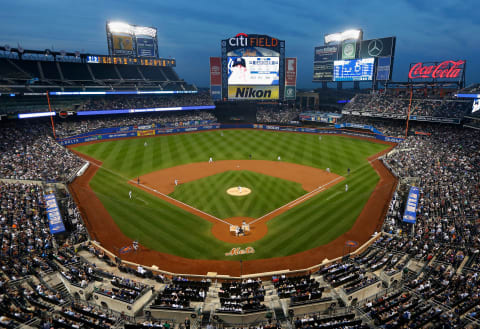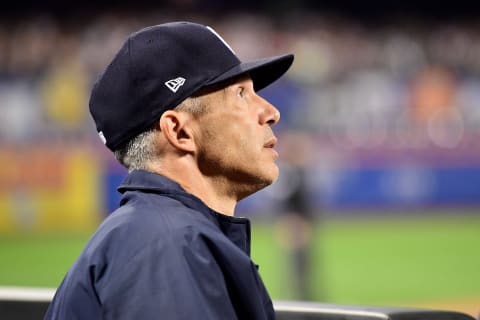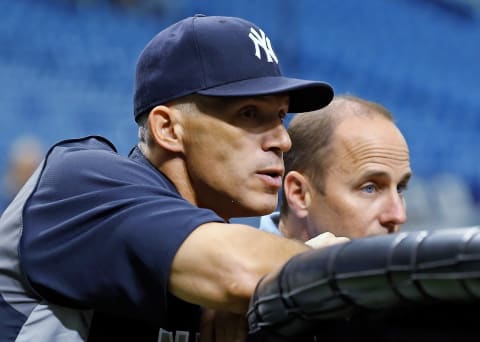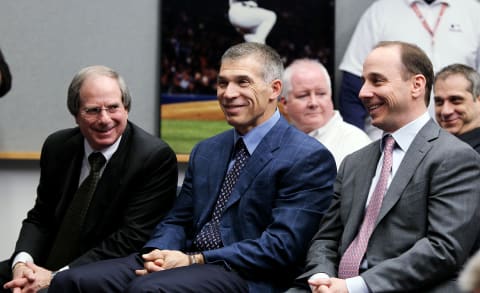Yankees minor league playoff final: Scranton/Wilkes-Barre RailRiders

The Yankees Triple-A club returned to the finals for the second consecutive year. And although the players had some fight in them, they were finally left bloodied and beaten.
The Yankees top affiliate, Scranton/Wilkes-Barre RailRiders, returned to the Governor’s Cup hoping for a repeat performance of last season. Last year’s team not only won the Cup, which is the International League’s championship series and trophy but the national Triple-A tournament, as well.
But their opponent from last year also returned: The Durham Bulls. And this time, the Bulls came back rough and ready for the fight. That’s the way this series went down, as the second iteration of a heavyweight bout.
Durham came out throwing, and shutout the RRs in game one (6-0). The RailRiders were able to take that punch and returned the blow, shutting out the Bulls in game two (4-0).
That only served to make the Bulls mad. With gravel in their guts and spit in their eyes, they scored six runs in each of the next two games while Scranton managed six runs in the two games combined (6-2; 6-4).
They say if you want to be the man, you have to beat the man; that’s what happened here. Scranton came ready to fight, while Durham came ready to win.
While they club focuses on winning the national tournament, we will scrutinize the efforts by some of these young Yankees.

Giving In is Giving Up
When a team gives up 18 runs combined in three of its four games, it’s time to blame the pitching. There were several who came out with weak stuff.
RHP Ronald Herrera set the tone early with perhaps the worst start of the set. He was counted out after just 4.2 innings pitched in game one, after giving up six hits and four runs.
That wasn’t the worst pitching of the series, though. That honor belongs to righty reliever Cale Coshow who gave up three earned in just two-thirds of an inning in game three.
And in the final contest, Brady Lail and Jonathan Holder combined to knock out the RRs. Right-handed starter, Lail, gave up three earned runs in five feeble innings pitched, while fellow righty Holder provided absolutely no relief. He watched the Bulls earn two more runs in his two innings pitched.
Not all the pitching was horrible, though; some was merely mediocre.

Still, Pretty Bad
RHP Chance Adams was not stellar in his game three start, but two earned runs in four innings is still on pace for a quality outing. Keeping his scorecard even for the bout, Adams struck out six in his four innings pitched but did give up a home run. His was not the best start but Coshow was the real culprit in game three.
Lefty reliever Joe Mantiply had one bad outing—two runs and four hits in one inning—and one good game: Two innings, one hit, and no runs. For a reliever at the big league level, batting .500 would be horrible. But, for a minor league reliever, it goes down as a possible positive.
Best of the Lot
However, there were two pitchers who covered themselves in glory. First and foremost is RHP Domingo German. His was the best performance by any pitcher in the series.
And not just because he pitched seven superlative innings in game two. German allowed no runs, which is easy when you give up only one hit while striking out eight. But the other reason his was the best start is that it came immediately after the RRs were shut out in game one.
Had he pitched poorly, Scranton’s season would have been all but over. German knew that. The team knew it, too. When the Yankees talk about wanting their pitchers to get Postseason experience, this is exactly what they mean.
If you want to know why German has been recalled and is pitching again in pinstripes, it’s because of this start.
Reliever Nick Rumbelow also had a brilliant showing. The righty appeared in two games and pitched a total of two innings. He struck out three and allowed two hits but no runs. The Yankees have been looking at the 26-year-old for a while; you can bet they’re looking harder now.

Maybe They were Working on their OBPs
Both the pitchers and the hitters, however, combined to lose this series. And just like the pitchers, the hitters ended in three distinct categories.
For instance, LF Jake Cave appeared in three games, started two, and never got a single hit. It must be hard to get to the end of a playoff series and see .000 as your batting average. Only slightly better, however, was fellow outfielder Billy McKinney and his .071 for the four-game set.
Catcher Kyle Higashioka could do little but continue to watch his prospect stock drop. He started all four games and ended with a .143 BA. Teams win playoff series when their best players play at their best. That certainly was not true for these three.
More from Yankees Minor Leagues
- Yankees add to championship core with Wilmer Difo signing
- Yankees’ Jasson Dominguez ranks in tough spot on Arizona Fall League Top Prospects list
- Yankees protect only 1 top prospect from 2022 Rule 5 Draft, take major risk
- Scouts ripping Yankees’ Jasson Dominguez’s AFL performance need to get real
- Ranking Yankees prospects heading to Arizona Fall League
Good is the Enemy of Great
And it was only slightly more true for 3B Miguel Andujar. Andy ended the series with an anemically low BA: .176. But he did have one really good game, batting .400 with a double and a RBI in game two. That’s enough to put him in the better than lousy category.
Joining him there is CF Mason Williams. He finished with a .222 average for the finals, but he was the RailRiders most consistent contributor.
No Prospective Prospects
Perhaps the biggest disappointment, though, (from a Yankees developmental perspective) is that none of the top performers are big-time prospects. 1B/DH Mike Ford (.313), 1B Garrett Cooper (.429), and 32-year-old SS Jonathan Diaz (.375) were three of the best hitters for Scranton.
While Cooper and Ford might see time in this year’s Yankees playoffs, none of the three are in the Yankelong-term plans.
2B Donovan Solano is the only interesting player who did well. The free agent out-hit his regular season average, .353 to .282. That could be enough for the Yankees to potentially re-sign the 29-year-old Solano for continued minor league depth.
This was the second year in a row that Scranton had the talent to be a force in the International League. But the Triple-A club will be even better to start next season, with most of the Yankees’ top prospects on the roster.

You Load Up, You Party
Scranton’s pitching staff already features Yankees third-ranked prospect Chance Adams. It is likely that both fifth-ranked Justus Sheffield and seventh-ranked Domingo Acevedo will be added to the roster over the winter.
The offense is already well represented, with number six prospect, Andujar, and top overall prospect SS Gleyber Torres already ensconced. 2B Nick Solak, currently ranked ninth for the Yanks, has earned a promotion and will probably make Solano expendable.
After removing Clint Frazier from the prospect list, as seems apropos, the Yankees will have six of their top eight prospects playing at Triple-A to start the 2018 season.
But the excitement for this team goes far beyond arbitrary rankings. The eye test tells us that the Yankees will have a lot of players seemingly ready to be real contributors.

Everybody Needs to Pitch In
Rounding out the Scranton pitching staff will be Nestor Cortes, Dillon Tate, and German. Tate is the Yankees fourteenth best prospect but might turn out to be the best pitcher of the group.
The Yankees are already showing how much they like German—ranked 21st—as they have recalled him for the stretch run. And maybe beyond.
And Nestor Cortes pitched across three levels in 2017 and finished with a 2.06 ERA for the year. They will all be slated for Scranton. But if six pitchers seem like one too many, remember one of them will probably earn a spot in the Yankee’ bullpen next spring.
Still, that will leave five talented arms at the Yankees’ highest level, ready to play or be traded away. That group does not seem to have a Luis Severino in it and will probably produce a starter or two, but no true ace.
The offensive players, however, might collectively be better than what we have already seen.

But How Long Will they stay at Triple-A?
SS/3B Gleyber Torres has the potential to be the best offensive player on the Yankees. His recent promotion as the number one prospect in baseball despite missing half the year with injury speaks volumes.
3B Miguel Andujar looks more and more like the third baseman of the future. He’s already a dynamic hitter, and he, too, has been recalled.
Those are the headliners; the Yankees have two possible fourth outfielders already in Scranton, as well. The odds are that at that either Jake Cave (19) or Billy McKinney (24) will have another good year and provide enviable outfield depth.
Joining them for 2018 will be UI Thairo Estrada (18) and 2B Solak (9). That will give the Yanks ready and highly talented pitching, offensive, and defensive replacements.
The irony of the minor leagues is that the better you play, the more likely you are to be promoted. While that’s great for you and the organization, it’s hard for the team left behind to win.
My guess is that this will be the fate of the 2018 RailRiders: They will start with a ton of talent but lose it to the parent club. I doubt they make a third straight finals appearance.
The good news is that the 2018 Yankees will get another influx of great young talent, ready to fight for the title. Hopefully losing this season will make them more battle-hardened next year.
Next: Now See How the Trenton Thunder Finished its Season
And that should mean I will spend less time writing about the RailRiders winning the IL, and more about the Yankees knocking out the AL. That’s called moving up in weight class.